This processor has the best performing CPU on a smartphone today
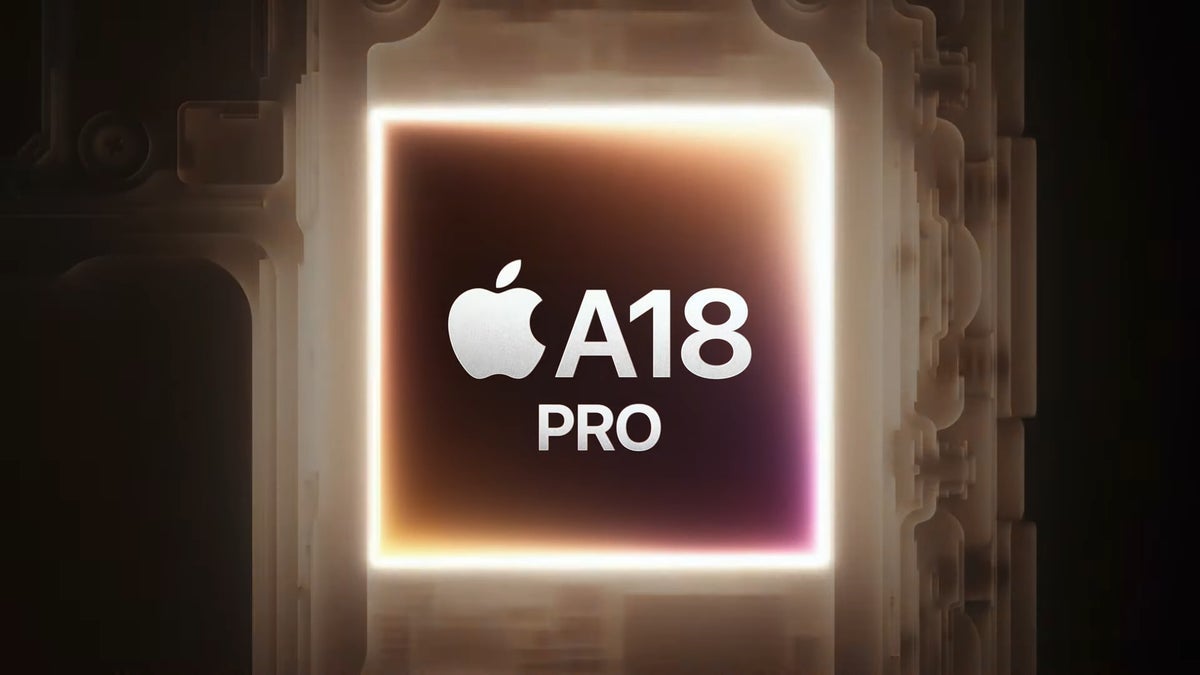
Apple has done a great job designing its own chipsets for the iPhone, a practice that started with the A4 SoC that powered the iPhone 4. Yes, back in those days Apple only released one iPhone model a year which is shocking, I know. Just remember that when Steve Jobs held the iPhone aloft for all to see on January 9, 2007, he had only one device in his hand, not four of them.
With the release of the iPhone 16 series, Chinese based blogger Geekerwan updated his performance charts ranking the top-performing application processors used to power smartphones. First, looking at the performance of each chipset's CPU, Apple's A18 Pro and A18 ranked number one and two respectively with 228.5 and 223.3 points. The scoring is weighted with 30% coming from the single-core results and 70% from the multi-core results and is then compared to the scores achieved by 2020's Snapdragon 865 which is ranked at 100%.

The chipsets with the best-performing smartphone CPUs of all-time according to Geekerwan. | Image credit-Geekerwan
The A18 Pro is found inside the iPhone 16 Pro and iPhone 16 Pro Max while the A18 powers the iPhone 16 and iPhone 16 Plus. Both chipsets feature a six-core CPU with two performance cores and four efficiency cores. As a result, you'd expect both chips, produced using TSMC's second-generation 3nm process node (N3E), to perform the same. The slightly better performance of the A18 Pro's CPU could be attributed to the better thermal design of the iPhone 16 Pro series compared to the non-Pro models.
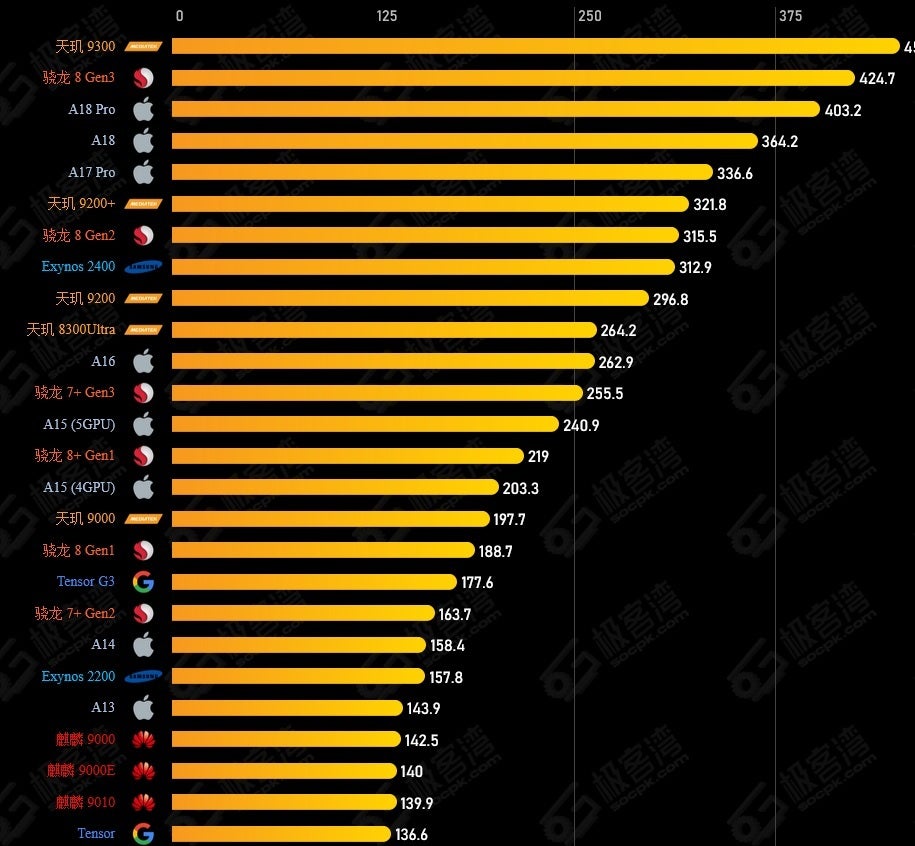
The chipsets with the best-performing smartphone GPUs of all-time according to Geekerwan. | Image credit-Geekerwan
MediaTek's Dimensity 9300, with no efficiency cores, finished third in the CPU performance race with a score of 204.5. The A17 Pro which runs the iPhone 15 Pro and iPhone 15 Pro Max, and the Snapdragon 8 Gen 3 that powers the Samsung Galaxy S24 Ultra, finished fourth and fifth with scores of 202.6 and 196.1 respectively.
Interestingly, the A18 Pro's CPU performance cores outperformed the Snapdragon 8 Gen 3's Cortex-X4 prime core by a whopping 42% while using only 8% more power. The efficiency cores of the A18 Pro's CPU also outperformed all other efficiency cores found on smartphone SoCs. For example, the A18 Pro's efficiency cores were slightly faster than the Cortex-A720 efficiency cores on the Snapdragon 8 Gen 3 while using 30% less power.
The main difference between the A18 Pro and the A18 is that the latter is equipped with a six-core GPU compared to the five-core GPU used with the A18. While this allowed the A18 Pro GPU to edge out the A18 GPU by a score of 403.2 to 364.2, that was only good enough for Apple's two A-series SoCs to finish third and fourth in GPU performance respectively.
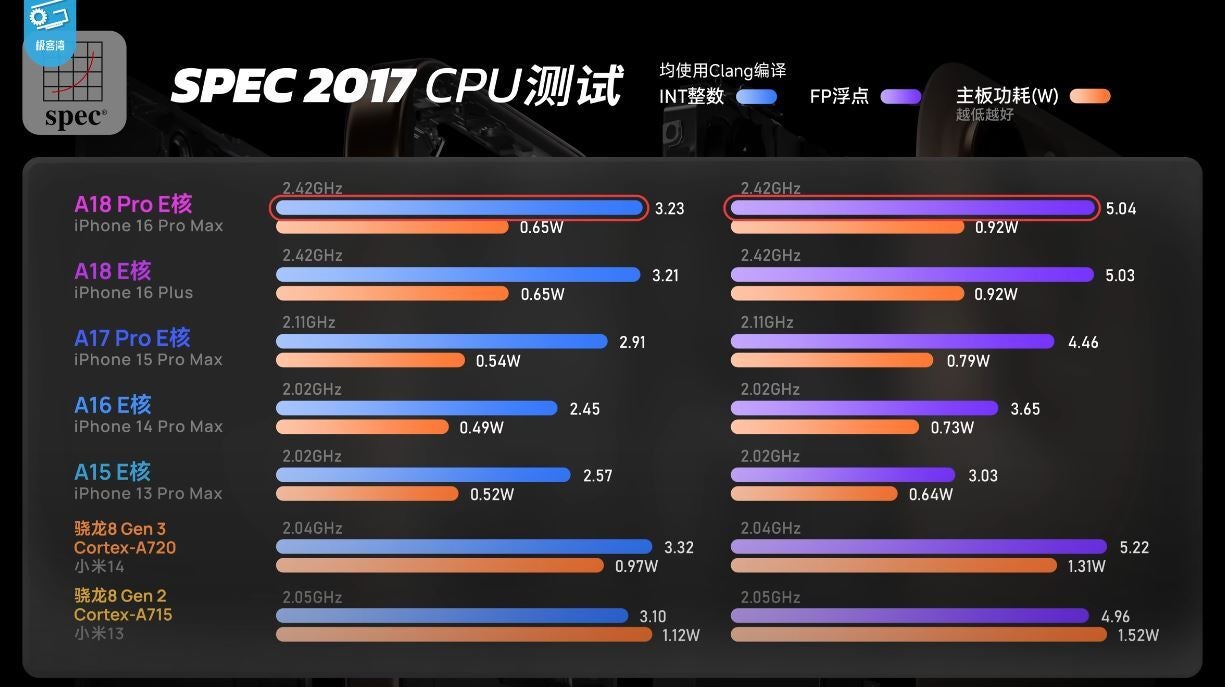
The A18 Pro and A18 were the top two smartphone chipsets when ranking CPU performance cores. | Image credit-SPEC 2017
The fastest GPU performance achieved on any smartphone belongs to ARM's Immortalis-G720 MP12 on the Dimensity 9300.The latter's score of 452.5 beat out the 424.7 score achieved by Qualcomm's Adreno 740 GPU used on the Snapdragon 8 Gen 3 SoC. Rounding out the top five performing GPUs on a smartphone is the GPU that belongs to Apple's A17 Pro AP.
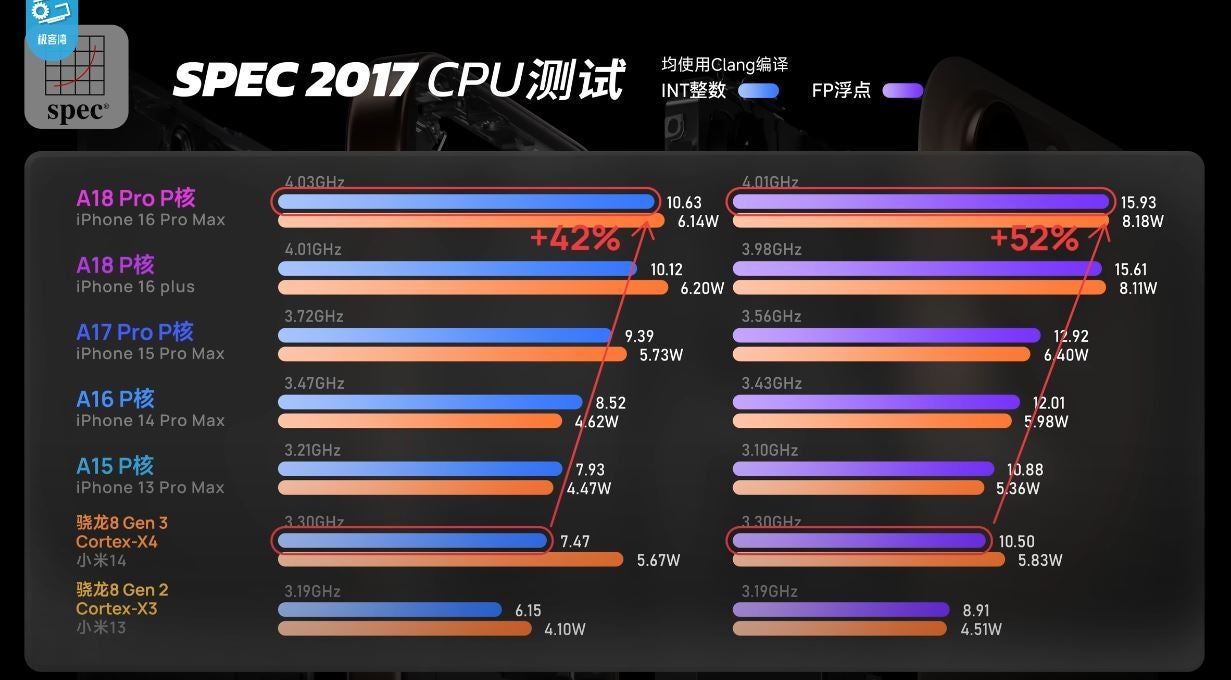
The A18 Pro and A18 also had the most efficient CPU cores. | Image credit-SPEC 2017
TF International's famous and reliable Apple analyst Ming-Chi Kuo recently said that Apple will use TSMC's third-gen 3nm process node for next year's A19 and A19 Pro application processors. While originally it was thought that Apple might turn to TSMC's 2nm node next year, that node will apparently make its debut with the A20 Pro chipset. That component will debut on the iPhone 18 Pro series in 2026 although anything can happen between now and then.
Follow us on Google News











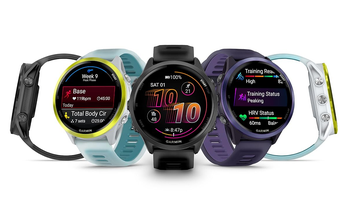

Things that are NOT allowed:
To help keep our community safe and free from spam, we apply temporary limits to newly created accounts: